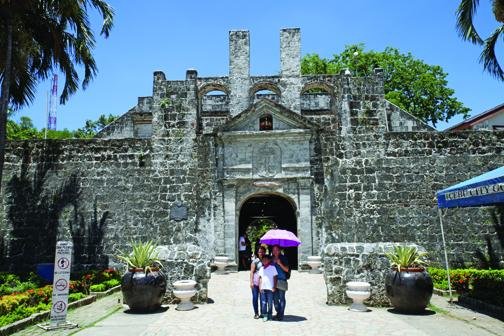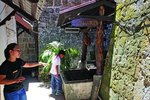Occupations, revolution and war in Cebu
The Chronicle’s Mark Bellune traveled to Cebu, Philippines, recently to see a friend from Lexington. He learned much of the history and culture of the nation of islands in the Pacific — living …
This item is available in full to subscribers.
Subscribe to continue reading. Already a subscriber? Sign in
Get 50% of all subscriptions for a limited time. Subscribe today.
Please log in to continueNeed an account?
|
Occupations, revolution and war in Cebu
The Chronicle’s Mark Bellune traveled to Cebu, Philippines, recently to see a friend from Lexington. He learned much of the history and culture of the nation of islands in the Pacific — living with locals for 2 weeks. This is a continuing series.
We toured the Museo Sugbo (Museum of Cebu) with our guide Maria Katrina Repalo explaining about the Spanish, American and Japanese occupations and finally the liberation by US forces in World War II.
Founded by Andres Bonifacio in Manila as a secret revolutionary society on July 7, 1892, the Katipunan rebels finally reached the shores of Cebu June 19, 1897.
On April 3, fighting broke out in Labango between the Spanish and Katipunaros armed with bolos, pointed bamboo poles and perhaps 5 rifles and shotguns.
The rebels drove out the Spanish in Labango followed by other towns and finally Cebu City.
Spanish troops withdrew from Cebu on Dec. 24, 1898, and the Army of the Philippine Republic entered the city 2 days later.
The forces’ head, Luis Flores, took control and a day-long celebration was held Dec. 31.
The Americans are coming
On Feb. 21, 1899, the US gunboat Petrel docked near Fort San Pedro, signaling the American occupation of Cebu.
The next day the American flag was raised over the fort after Republican forces capitulated and surrendered “under protest.”
On April 16, 1899, 58 towns elected a new government with the blessings of the American authority.
The 1st battle between Americans and Cebuanos erupted near Buhisan on June 24, 1899.
Gen. Aracadio Maxilom issued a call to arms with these lines: “The hour has already sounded when the Mother Country, in the midst of her tortures and countless sufferings, Cebuanos... raise the war cry throughout our fields... Independence or death!”
Most of the revolutionary leaders surrendered in late 1901. On Sept. 8, 1902 the war with the US officially ended, but a sporadic guerilla resistance continued.
The Japanese invade
On April 10, 1942 Japanese forces landed around Cebu and American-Cebuano forces began surrendering. The brutal Japanese occupation had begun.
On Oct. 7, 1942 guerillas under Maj. James Cushing ambushed and inflicted the first heavy casualties against the Japanese in Lawa-an Minglanilla.
American liberation
On March 26, 1945, American soldiers landed in Talisay after an hour-long bombardment. They landed unopposed but incurred heavy casualties due to land mines. This began the American liberation of Cebu.
On Feb. 27, 1945 Gen. Douglas McArthur turned over the civil
government of the Philippines to President Sergio Osmena Sr.
Next: The journey continues.
Keywords
travel, cebuOther items that may interest you










Comments
No comments on this item Please log in to comment by clicking here